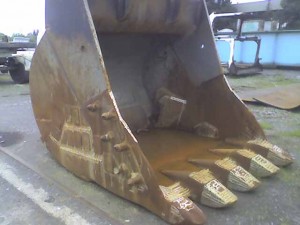Entries tagged with “cr6”.
Did you find what you wanted?
Fri 14 Feb 2014
This has to be one of the coolest types of cutting. Raw obliteration of metal.
As you know, hexavalent chromium (Cr6) is generated when the metal, chromium, is heated. Cutting this metal with a plasma torch is an easy way to heat it up quickly.  We performed air monitoring on one employee performing plasma cutting on #304 stainless. Luckily the employee was wearing a 1/2 face tight fitting respirator (and skin protection due to the body readily absorbing Cr6) and we found exposures at 36% of the exposure limits (they were within the acceptable limits). This employee was able to stand away from the cutting due to the machine he was using. He did not do this task all day and no engineering controls (ventilation) was used.Â
****Caveat: Please do your own air sampling. Conditions and environment may not be similar to your environment, and they can change rapidly. One sampling event rarely indicates all conditions. We’re talking about people’s health!****Keep in mind welding safety!Â
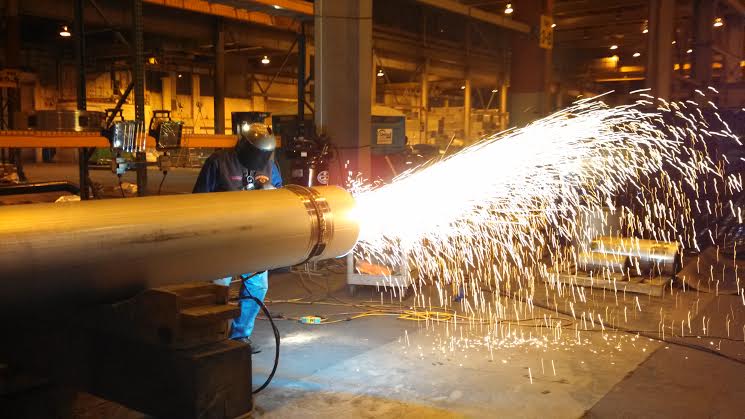
And a close up of the cutting machine without the motor & tracks:
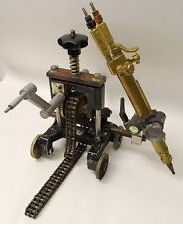
Mon 2 Jul 2012
Posted by admin under Dermal, Hexavalent chromium, Management, Stainless Steel, Welding
Comments Off on Hardfacing – Chromium 6 – Picture of the day
If you use heavy equipment and need to move dirt, rocks or soil, look closely at the buckets. Many times they will be coated with a material called hardfacing. It is a durable (consumable) welding bead laid out in a pattern. This pattern (from what I am told) helps to extend the life of the bucket. Apparently the cost of putting this product on the buckets is well below the cost of replacing the bucket (or teeth, or whatever).
The hazard is really on during the application of hardfacing. See my earlier post here. Hardfacing contains stainless steel (approximately 25%?, but it varies). Heating the stainless steel releases chromium in it’s hexavalent form (Cr6).
If your buckets have this on their exterior, your employees are probably exposed to hexavalent chromium at some point in the year.
However, the pattern is an art & science. Look closely at the side of this bucket…I think I know where this welder got his inspiration.
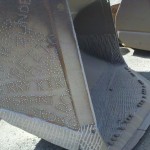
Tags: air monitoring, bucket, chrome 6, Chromium 6, cr6, excavator, hexavalent chromium, industrial hygiene, loader, safety, welder, welding
Mon 14 May 2012
If you hardface on construction equipment (or anything) you *probably* have overexposure to airborne hexavalent chromium. There are always exceptions, but if you are using a hardfacing wire/stick with any amount of chromium in it, the process (heat) generates hexavalent chromium. For how this happens, go here.
In construction it is quite common to have buckets and equipment with hardfacing applied to the surfaces in order to protect the equipment from excess wear and deterioration. The grid pattern varies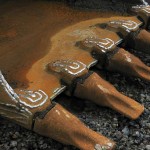 , but it can look like this.
, but it can look like this.
I realize that the application of the hardfacing procedure doesn’t occur very often. However, when it does, there is usually high levels airborne hexavalent chromium generated. So, what to do?
- Use some type of ventilation system (I know, I know, it messes with the shield gas, but do something!)
- Wear (at least) a 1/2 face tight fitting respirator with P100 (HEPA) filters (honestly, I’d buy a powered air purifying welding hood if I was doing it..and money was not an object)
- Cover any exposed skin (it can be absorbed by your skin)
- Designate the area as hazardous and limit the activities in this area (no eating!)
- Perform air monitoring to verify airborne levels are below limits (and get an IH out to evaluate it)
These suggestions really only scratch the surface of what you should do. Doing all of the above will not even meet the OSHA rules…but it will help protect you from exposure. Here is the OSHA Fact Sheet. Â Another article from Welding Design & Fabrication.
